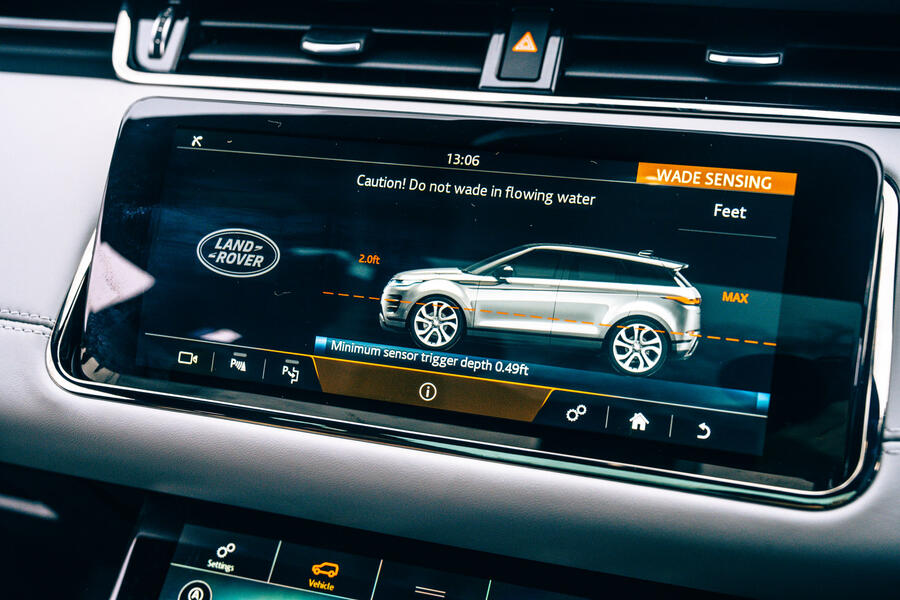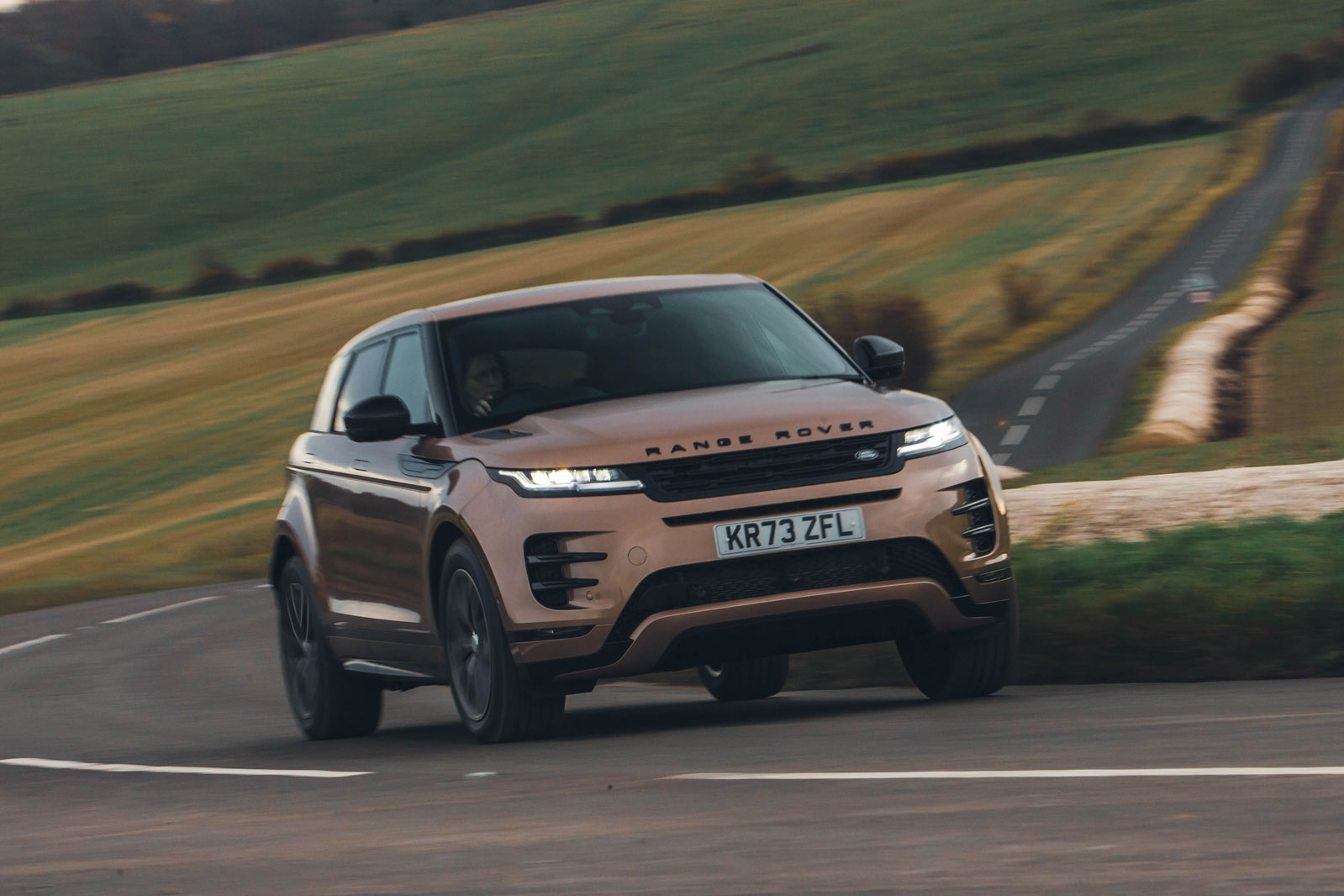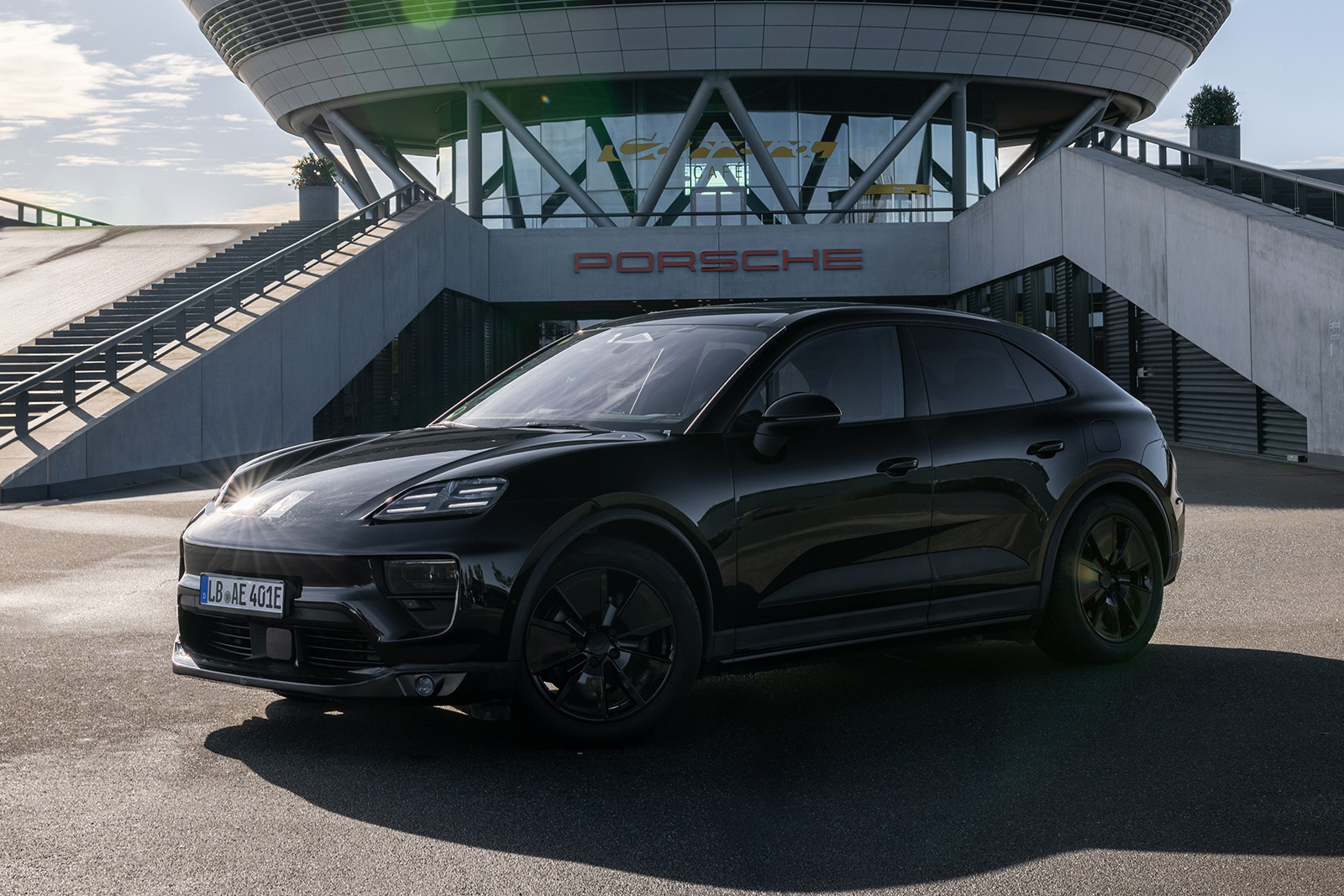Due to the fairly supple way the original car was set-up, it needed slightly longer to settle onto its loaded side than some rivals, but had decent outright lateral grip levels even on slippery, chilly Tarmac thanks to the Pirelli Scorpion Zero tyres. The later car had more immediate responses, but its steering also felt very slightly nervous.
The chassis balance can even feel quite playful as you accelerate out of slower bends; there’s 200lb ft of torque instantly available to the rear wheels, and if you deploy it smoothly without triggering the electronic aids, it can add the faintest, fleeting suggestion of rear-driven poise.
Comfort and isolation
The last Range Rover Evoque (2011-2018) didn’t uphold the highest luxury-car standards for cabin isolation, which was one of the ways in which it felt less like a mini Range Rover and more like a Freelander in evening wear. The new one rights that shortcoming pretty clearly, though. We registered 64dB at 50mph in first-generation, diesel-engined Evoque when we tested it on a warm, still day in 2011, but the new PHEV recorded 62dB at the same speed and in windier conditions.
It’s a difference you would notice, and not just because of the quieter powertrain; better wind sealing and road noise suppression is clear.
The car’s seats may be found by bigger drivers to be slightly narrow in the upper backrest, and a bit meanly padded in places, but its ride is supple and generally quiet, with its 20in rims only thunking slightly over sharper-edged bumps. The car’s weight does show itself if you hurry it along cross-country roads with bigger undulations, but only in the odd bigger-amplitude heave or squat.
Pitch is laudably well controlled thanks to the car’s fairly even weight distribution and effective but progressive damping.
Off-road notes

In a segment where so many ‘soft-roader’ SUVs offer less than 200mm of ground clearance, the Evoque’s 212mm is probably its greatest asset on capability here. This isn’t the sort of car that people will use for steep climbs or rocky descents, but it may encounter the odd rutted track or muddy field, where a bit more fresh air under its skirts could be an advantage in some instances.
The car is said to offer as much as 600mm of wading depth. Our test car had only a claimed 530mm, but that’s still more than the old Evoque had. The car’s clearance angles, meanwhile, are slightly greater if you avoid the R-Dynamic bodykit.
Land Rover offers the usual multimodal Terrain Response system, but you can leave it in ‘auto’ and just let the electronics adapt to available grip as you go, if you prefer. Thanks not least to standard-fit M+S tyres, wet mud is no problem for the car at all, and so much instantly deployable torque makes for very good low-speed control.





